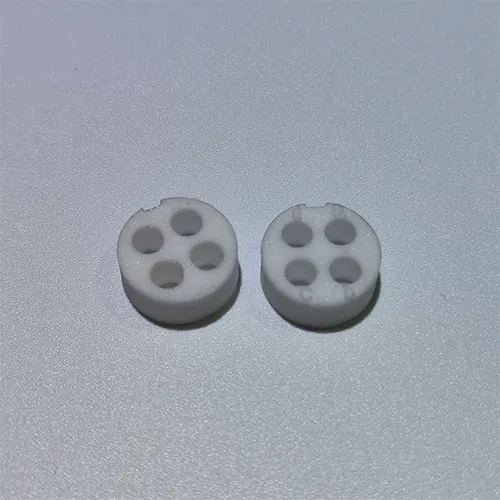Silicon Carbide

Silicon carbide is defined by ultrahigh hardness (Mohs hardness 9.2-9.3), extreme temperature resistance (melting point ~2700°C), high thermal conductivity, and chemical inertness. It also features a low thermal expansion coefficient, providing dimensional stability at high temperatures. These properties make it highly reliable in harsh environments, such as ultrahigh temperatures, high-frequency electric fields, and intense radiation.
In addition to its mechanical and thermal properties, silicon carbide exhibits high-frequency/high-voltage tolerance due to its wide-bandgap semiconductor capabilities, as well as radiation/corrosion resistance. These advantages make it a critical material for next-generation power semiconductors (e.g., MOSFETs, diodes), aerospace thermal protection systems, laser components, industrial wear-resistant tools, and 5G communication substrates. Known as the “cornerstone of third-generation semiconductors,” SiC has transformative potential in renewable energy power electronics, quantum technologies, and ultrahigh-temperature engineering.
FAQ
Precision ceramics offer superior high-temperature resistance, corrosion resistance, wear resistance, and insulation, making them ideal for extreme conditions like high temperatures and high pressure. They also support higher precision processing, meeting complex design needs.
Precision ceramics are widely used in aerospace, automotive, electronics, medical, and industrial equipment industries, especially in applications requiring high performance and durability.
Precision ceramics are challenging to machine due to their high hardness and brittleness. Special equipment and processes, such as CNC machining, are required to ensure precision and surface quality.
When selecting a ceramic material, it is essential to consider specific working environments and performance requirements, such as high-temperature resistance, corrosion resistance, and mechanical strength. Different applications require ceramics with varying properties.
Precision ceramics generally have a long lifespan, with their longevity ranging from several years to even longer, depending on the usage environment (such as temperature, pressure, wear, etc.).
- PREV: Silicon Nitride
- NEXT: Aluminum Nitride





